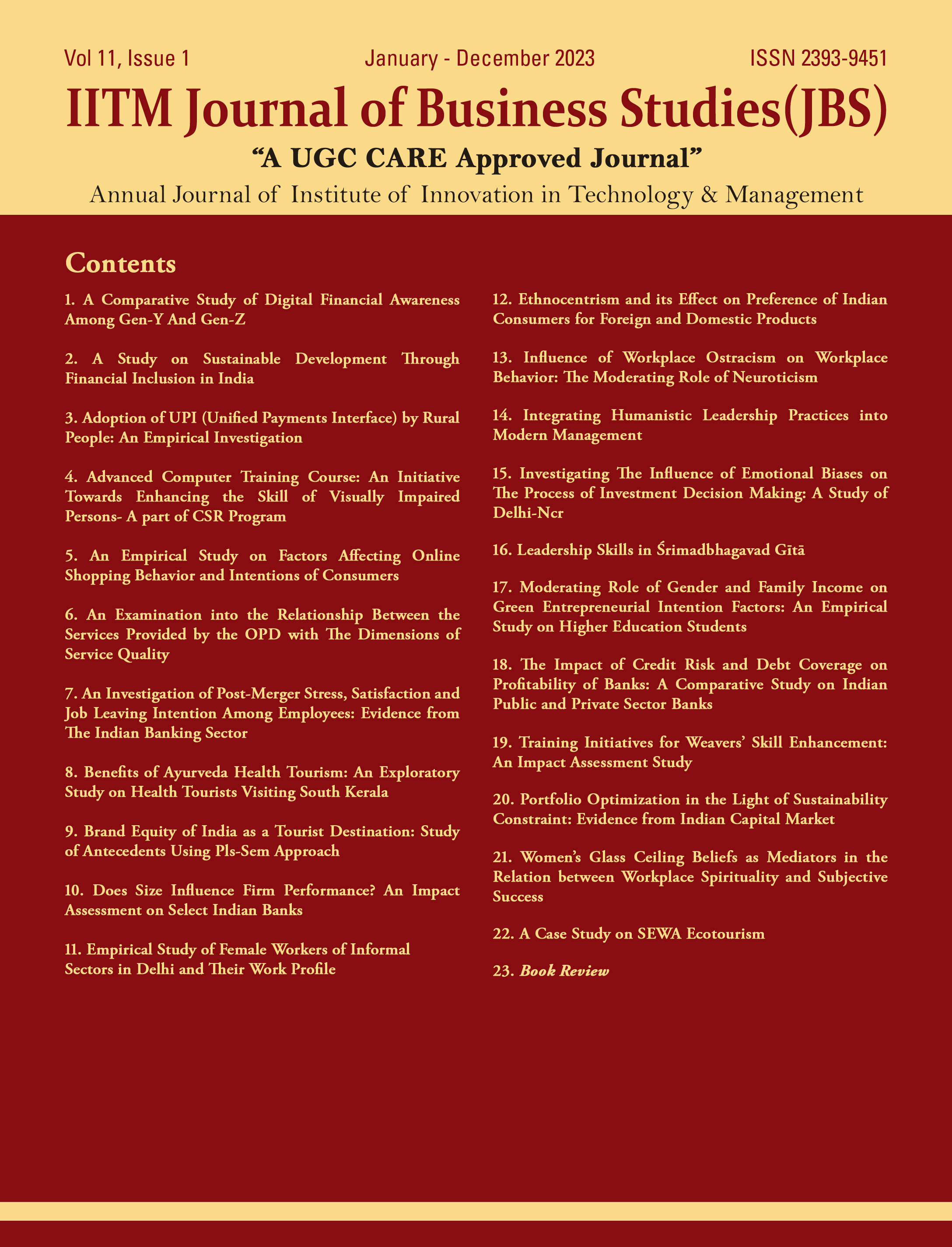A Study on Sustainable Development Through Financial Inclusion in India
Keywords:
Sustainable development, Financial Inclusion, Service, EconomyAbstract
Nationalization of banks in 1969 was the first strike to formalize financial sector in India. Several steps were then initiated to connect the unbanked population with banks through establishment of regional rural banks and NABARD in 1976 and 1982 respectively. Even after then lakhs of people still don’t trust formal financial institutions and are dependent on informal sector. Easy and secure access of financial services is what required by the uncatered section of the economy. This work will explore the path through which usability of the financial services can be increased by the beneficiaries (customers) in a sustainable way. The path clearly defines the importance of affordability, accessibility, awareness, attitude and usage towards the financial services in augmenting the level of financial inclusion. This work will help to comprehend the more sustained path for effective and efficient catering and consumption of financial services among seeking and vulnerable section of the economy.
References
Ahmad, S.Z. and Arif, A.M.M. (2015), “Strengthening access to finance for women-owned SMEs in developing countries”, Equality, Diversity and Inclusion: An International Journal, Vol. 34 No. 7, pp. 634-639.
Allen, F., Demirguc-Kunt, A., Klapper, L. and Peria, M.S.M. (2012), “The foundations of financial inclusion: understanding ownership and use of formal accounts”, (No w6290), The World Bank.
Banerjee et al. (2020). Understanding The Impact Of Skill-Biased Technological Change: An Exploratory Study Of Indian Economy. International Journal of Advanced Science and Technology, Vol. 29, No. 3s, (2020), pp. 1874-1881.
Bhushan, P., & Medury, Y. (2014). An empirical analysis of inter linkages between financial attitudes, financial behaviour and financial knowledge of salaried individuals.
Demirgüç-Kunt, A., Klapper, L. F., Singer, D., & Van Oudheusden, P. (2015). The global findex database 2014: Measuring financial inclusion around the world. World Bank Policy Research Working Paper, (7255).
Doll, W. J., & Torkzadeh, G. (1991). The measurement of end-user computing satisfaction: theoretical and methodological issues. MIS quarterly, 5-10.
Gardeva, A., & Rhyne, E. (2011). Survey report on opportunities and obstacles to financial inclusion. Center for Financial Inclusion, ACCION International.
Ghatak, A. (2013). Demand side factors affecting financial inclusion. Research Journal of Social Science & Management, 3(1), 2251-2157.
Lederer, A. L., Maupin, D. J., Sena, M. P., & Zhuang, Y. (1998, June). The role of ease of use, usefulness, and attitude in the prediction of World Wide Web usage. In Proceedings of the 1998 ACM SIGCPR conference on Computer personnel research (pp. 195-204).
Levine, R. (2005), “Finance and growth: theory and evidence”, Handbook of Economic Growth, Elsevier, Amsterdam, pp. 865-934.
Mckinnon, R.I. (1973), Money and Capital in Economic Development, Brookings Institution Press, Washington, DC.
Mukherjee, A., & Chakraborty, S. (2012). Financial Inclusion of the poor and Marginalised in Jharkhand: Analysis of the Existing Model. International Journal on Research and Development-A Management Review (IJRDMR), 1(1).
Peachey, S. and Roe, A. (2004), Access to Finance: A Study for the World Savings Banks Institute, Oxford Policy Management, Oxford.
Park, C.Y. and Mercado, R.V. (2015), “Financial inclusion, poverty, and income inequality in developing Asia”, Asian Development Bank Economics Working Paper Series No. 426, Manila. 15. Priyanka Yadav, Anil Kumar Sharma, (2016) “Financial inclusion in India: an application of TOPSIS”, Humanomics, Vol. 32 Issue: 3, pp.328-351.
Rachel Mindra, Musa Moya, (2017) “Financial self-efficacy: a mediator in advancing financial inclusion”, Equality, Diversity and Inclusion: An International Journal, Vol. 36 Issue: 2, pp.128- 149 17. Rastogi, S. and E., R. (2018), “Financial inclusion and socioeconomic development: gaps and solution”, International Journal of Social Economics. Vol. 45 No. 7, pp. 1122-1140.
Sukumaran, K. (2015). Financial access: inclusion and literacy. Annual Research Journal of Symbiosis Centre for Management Studies, 3(1), 188-207.
